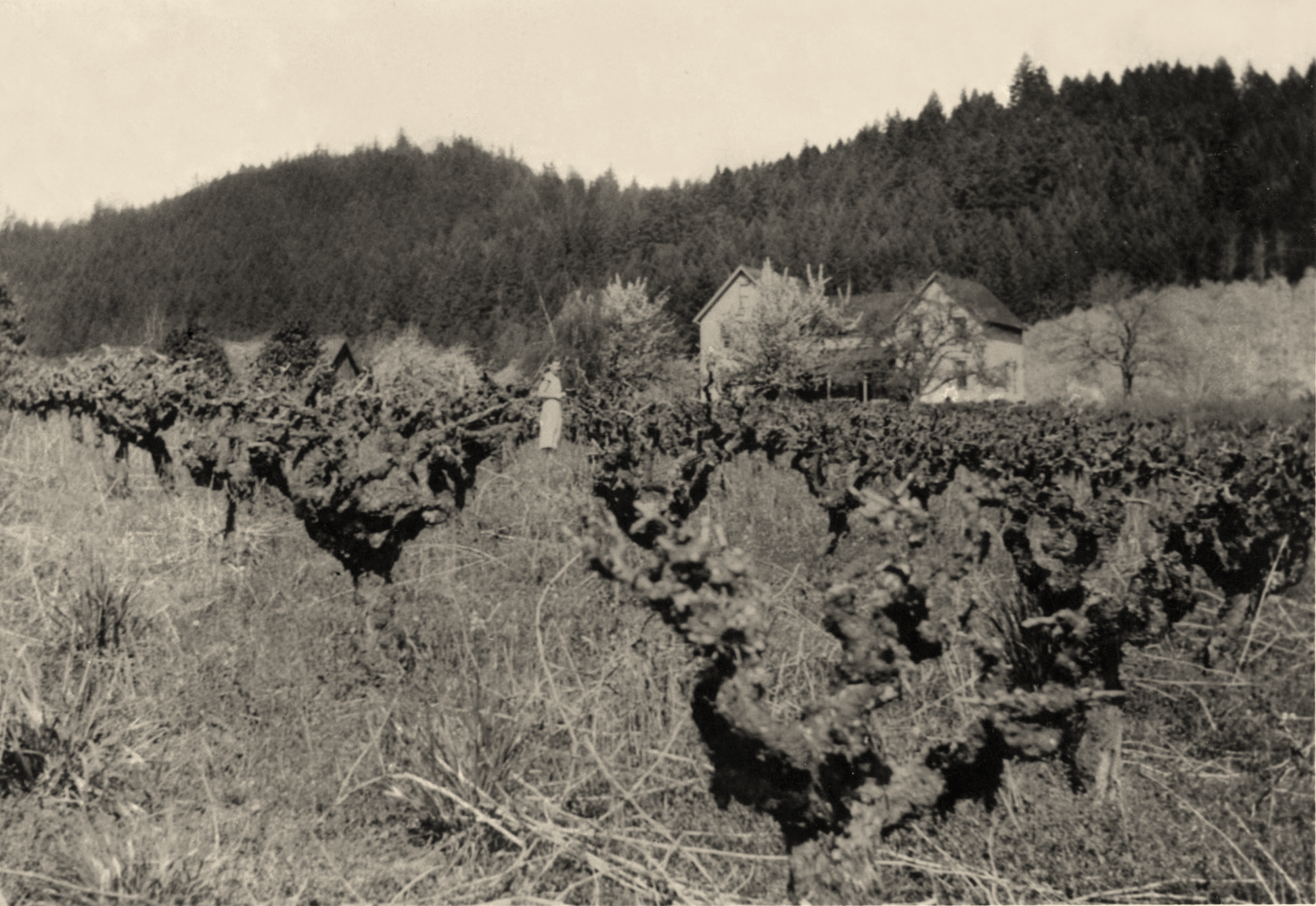
Willamette Valley
wine is older than you think...
It began in the 1860’s on a hill in Butteville and in the 1870’s on a hill above Forest Grove.
History On a Hill
This hill is the precise location of both the origins of Oregon's wine culture and Oregon's modern wine renaissance. This hill was known affectionately as “Wine Hill” as it was home to multiple vineyards and wineries. Most notable, was, the Reuter Estate which reigned from about 1872 until the beginnings of Prohibition in 1915 (Oregon enacted Prohibition 4 years prior the the Federal Government). This vineyard site was brought back to life when it was purchased in 1965 by Charles and Shirley Coury and in 1966 planted, once again, to wine grapes. Those vines and his foresight helped to kick off the modern wine industry in the Willamette Valley. It is what Coury called a “Wine Renaissance”. The original Charles Coury Vineyard was subsequently bought and sold many times since 1978, but it has been in the safe hands of the Milan Stoyanov family since 1992 . The property and winery are now known as David Hill Vineyard & Winery. This name is a nod to Frederick David who is credited with planting the first vineyard on this hill. The original Frederick David vineyard was located on a different part of this infamous hill.
Our Golden Cluster label started with the 2013 vintage, marking another new era of wines from this historic vineyard and a special link between Oregon's past and current wine history. For us, this is hollowed ground. We are forever grateful to the Stoyanov family for allowing us to buy a small amount of these historic grapes and allow us to make our wines under their historic roof. We are humbled by their generosity and their commitment to carry on a 130+ year old farming tradition on this hill.
You’ve got to know your past, in order to move forward.
Adolf Rueter (Reuter) Family
Frederick Adolf Rueter (Reuter) an immigrant from Germany, arrived in Forest Grove, Washington County, Oregon in 1886. He secured a plot of land in the hills above Forest Grove at the mouth of the Gales Creek Valley. He began construction on an “H” shaped home in a style that was standard for its era. These homes could be configured in many ways based on the size of ones family. Once construction was well underway, Adolf sent word for his family to join him in America. By 1887, his wife Caroline, his son Ernest, and his four daughters, Freida, Elsie, Kathe, and Helen arrived from Germany ready for their new life in America. Another daughter Gertrude, would be born in the U.S.A two years later. We assume that Adolf planted grape vines around 1887/88 and at some point (probably around 1891/92) started the Reuter Winery on site. Their wines quickly gained attention locally as well as some national acclaim. Many of Reuter’s wines received medals at numerous World’s Fairs (the premiere wine event of the era) across the country:
1898 Trans-Mississippi Exposition Omaha, Nebraska, silver medal.
1901 Pan-American Exposition, Buffalo, New York, bronze medals for his Burgundy and Muscat.
1905 Lewis & Clark Centennial Exposition Portland, Oregon, silver medal.
His son Ernest would enter the world of wine as well around the turn of the century. He was asked by the State of Oregon and the Oregon Agricultural Experiment Station (now called Oregon State University) in Corvallis, to write an “industry summary” on wine grapes. The paper was written in 1901 and it was titled “The Grape in Oregon”. This quote from Ernest is the most interesting:
”I find Sweetwater, Zinfandel, Burgundy, Black Hamburg, Muscatel, Red Mountain, Chasselas Fountainbleu, Delaware, and Muscat excellent for our purposes.”
By 1905 the State of Oregon asked the Reuters for an update, this time the summary title and subject was more specific ;“The European Grape in Oregon”. Again, Ernst Reuter would offer up words that are just as relevant today as they were in 1905:
"Contrary to general expectation, Oregon, the land of rain, is capable of producing some of the choicest vines."
It is a contentious topic; the question of who planted the first Pinot Noir vines in the Willamette Valley. Personally, focusing on one grape has always been the failure of our state. It is a distraction from the true potential of Oregon wine. But, for those who believe that this question is important, then you should know that there is strong evidence to suggest that the first planing of Pinot Noir (Burgundy) in the Willamette Valley, occurred in the late 1880’s at the Reuter Vineyard in the hills above Forest Grove. Oregon’s history with Pinot Noir didn’t begin in 1961, nor 1965-1966, it began 85+ years earlier, in Jacksonville, Oregon, by Henry Britt, and about 10 years later here in the Willamette Valley.
This is not to take anything away from the herculean efforts it took for Richard Sommer, Charles Coury, and David Lett to go against “popular” belief, and find their way up to Oregon to root and plant a wide variety of wine grapes between 1961 - 1967. Without their shear will, stubbornness, and vision, the modern Oregon wine industry would not be what it is today….
Wine (the Revelator)
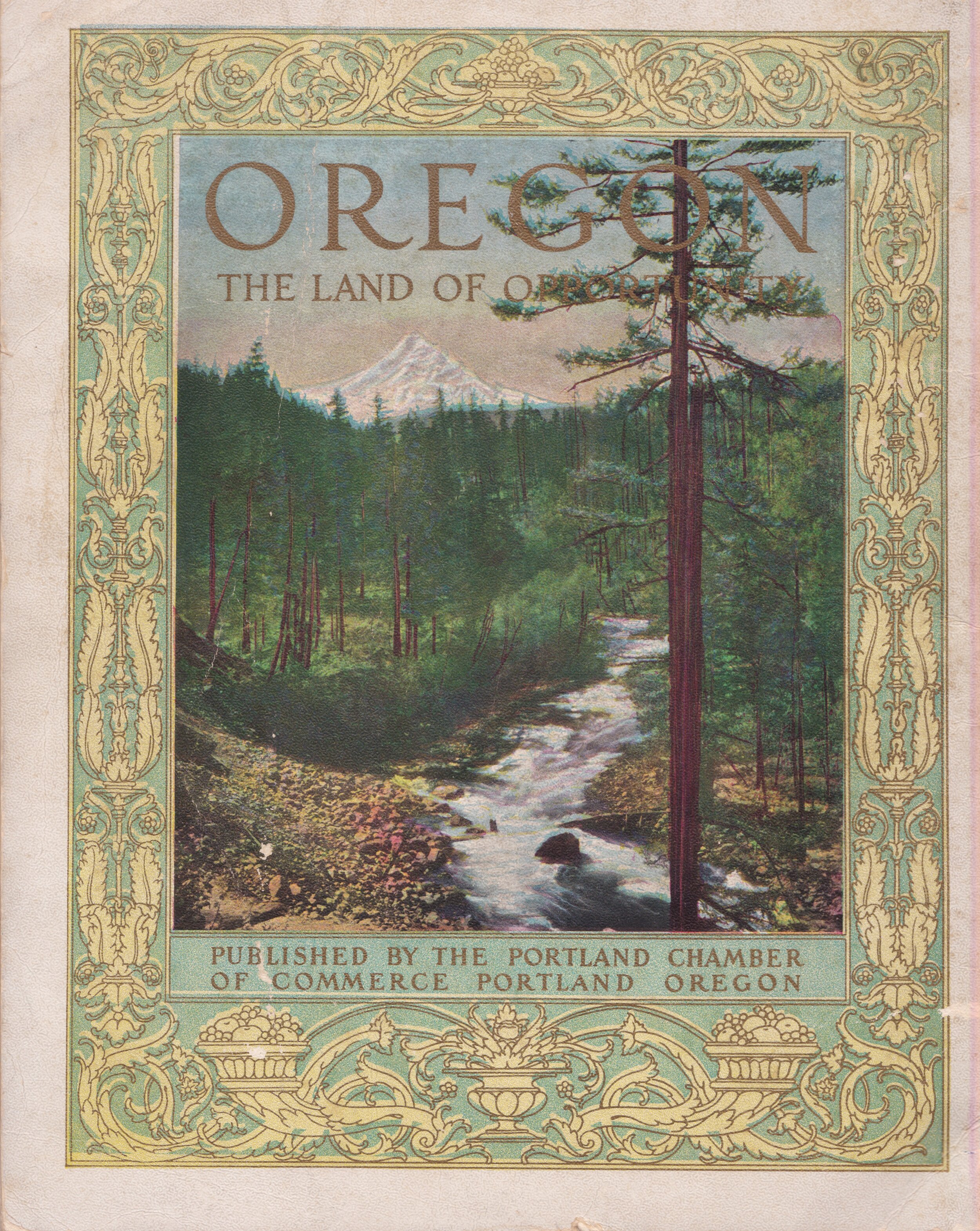
Cover Page from an original copy of "Oregon: The Land of Opportunity" created in 1911 by the Portland Chamber of Commerce

Header Page from an original copy of "Oregon: The Land of Opportunity" created in 1911 by the Portland Chamber of Commerce
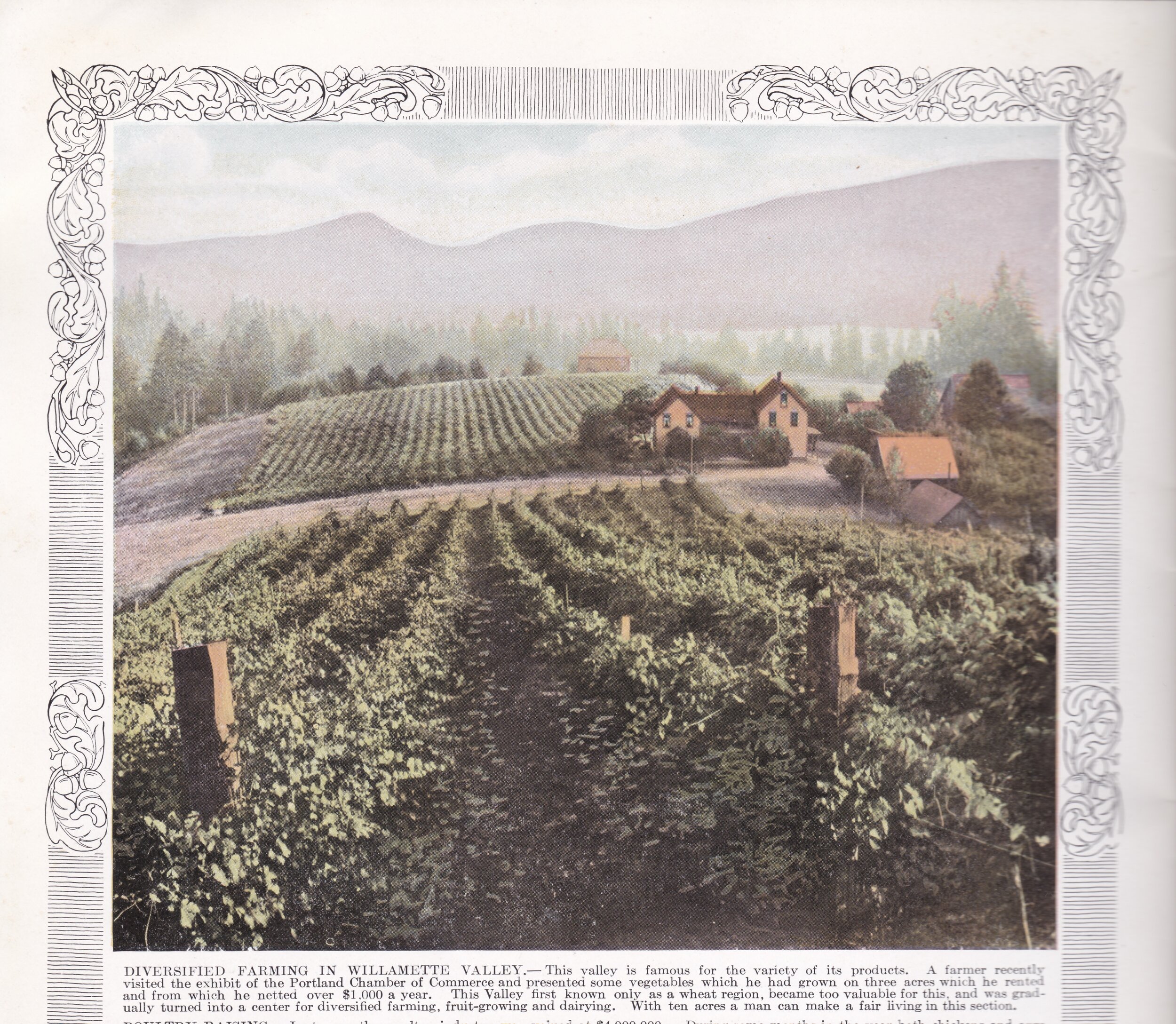
A rare color image of the original Reuter Estate and Vineyard from 1911. The original house is still used to this day by David Hill Vineyard & Winery. This site looks almost exactly as it did in over 110+ years ago.
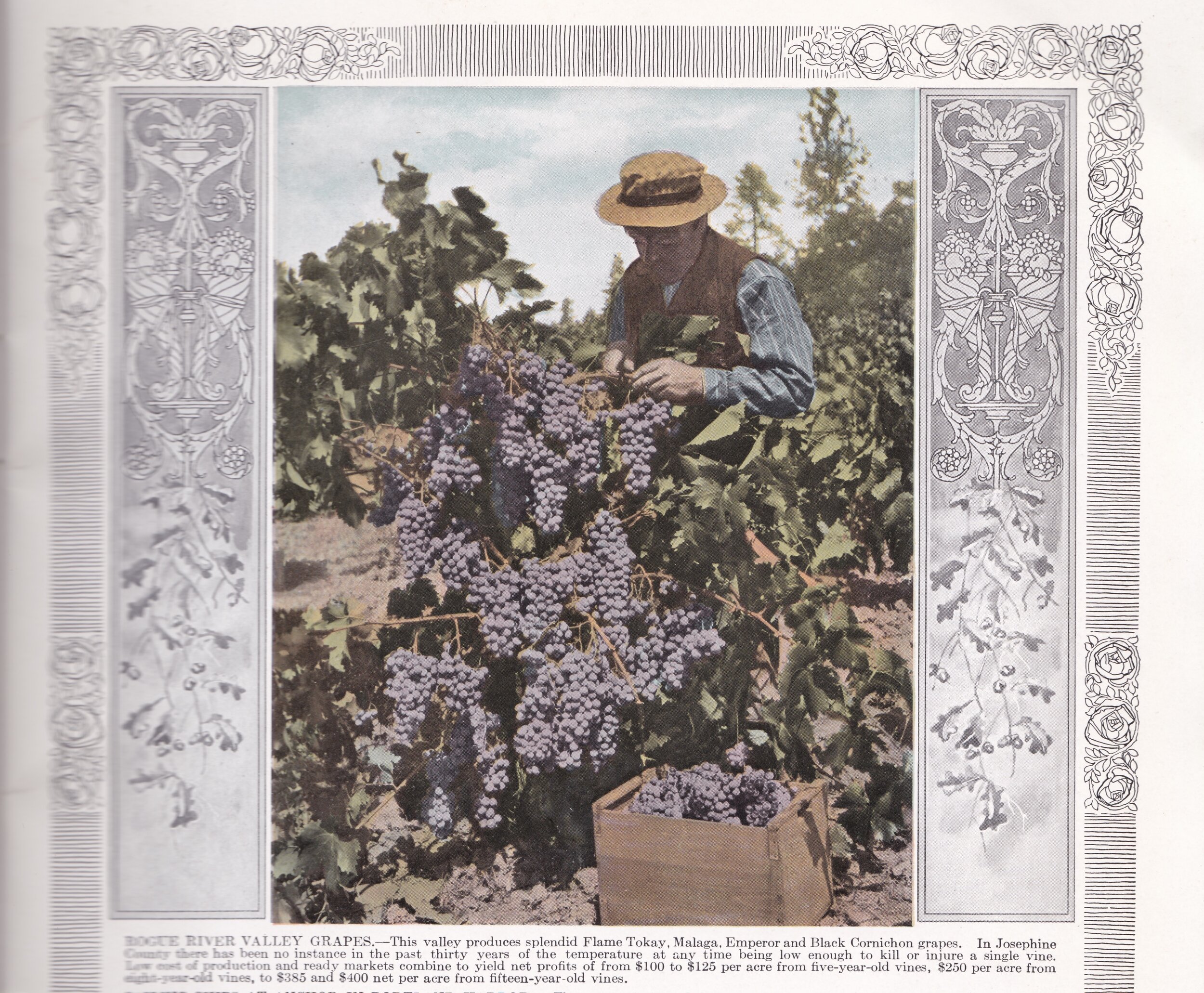
Without question, before Prohibition the Rouge Valley dominated the Oregon Wine scene. This image and another image from this same scene became very famous post cards.
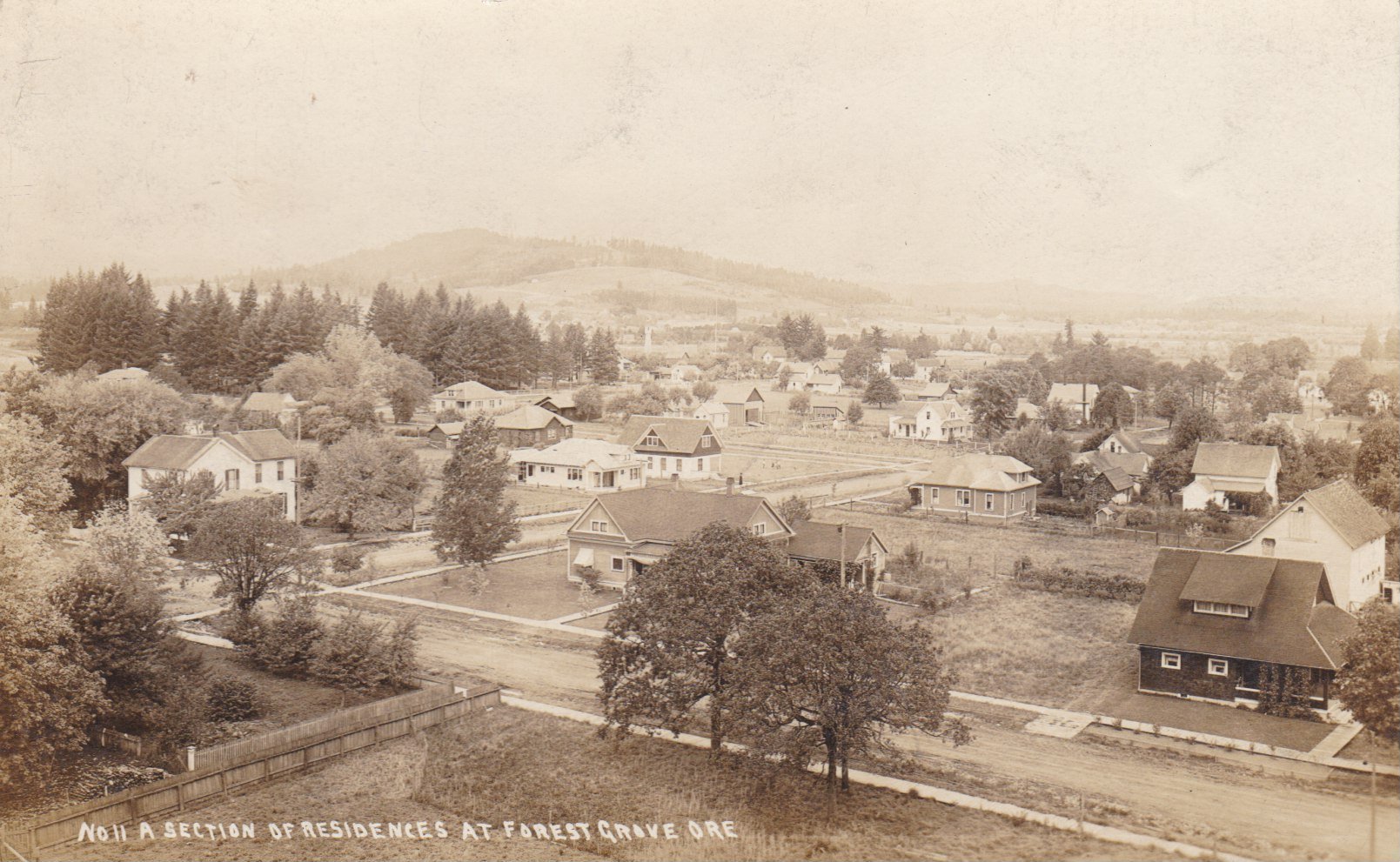
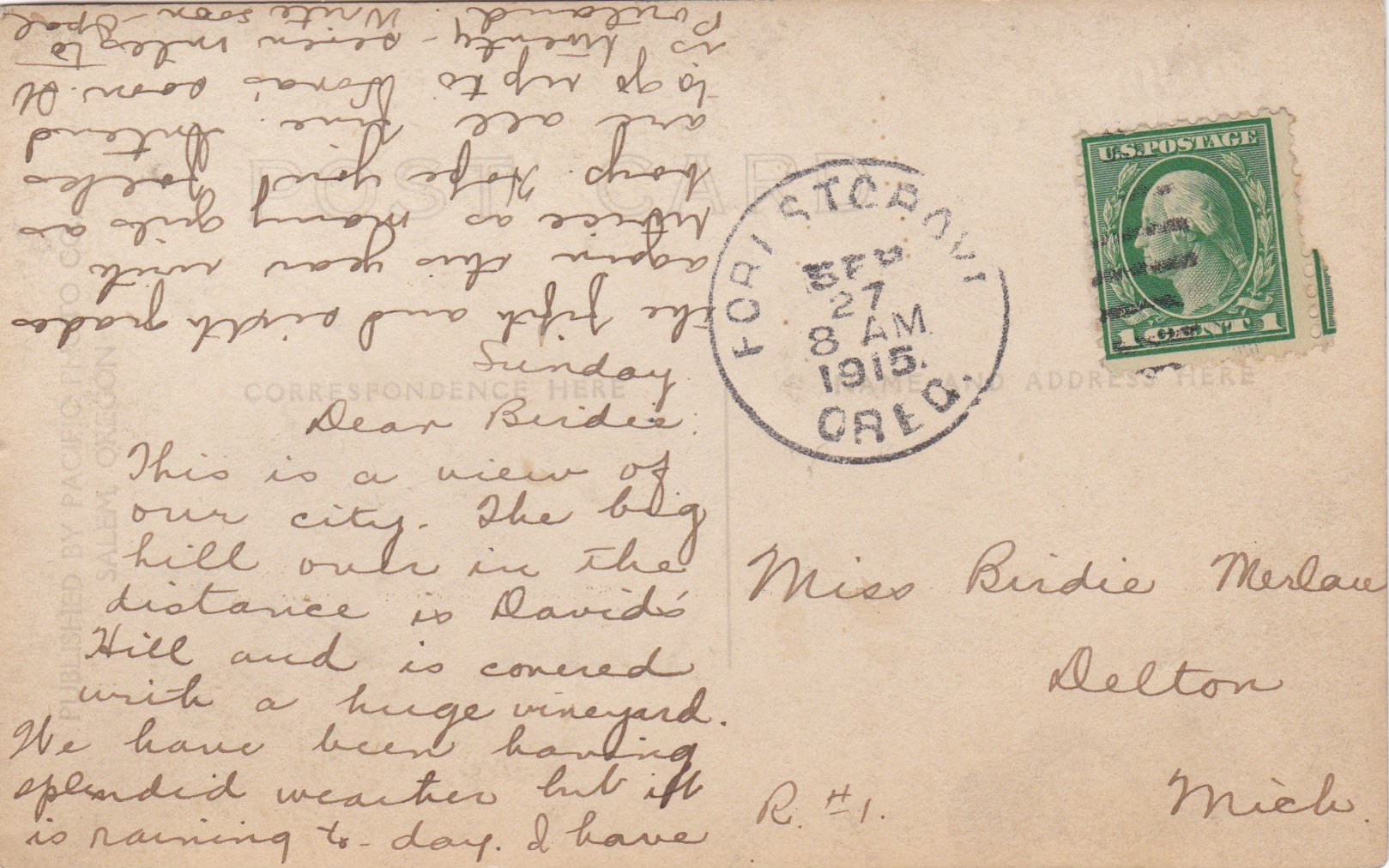
Postcard from September 25th, 1915, mentioning "The big hill over in the distance is Davids' Hill and is covered with a huge vineyard"

They knew back in 1904 that the most important place in the Willamette Valley was in the hills above Forest Grove.
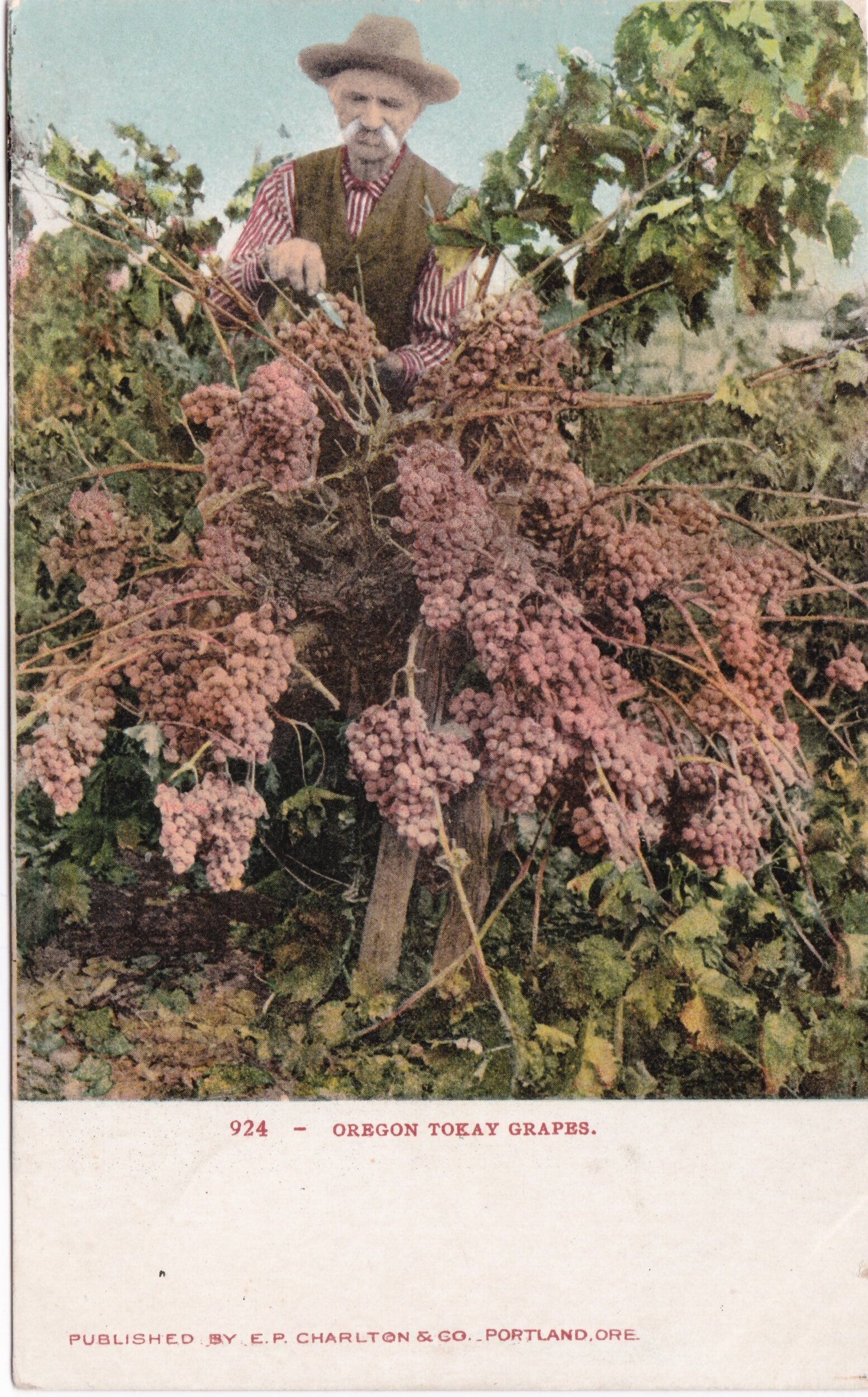
Oregon Tokay Grape Postcard from 1905. Wait? What?
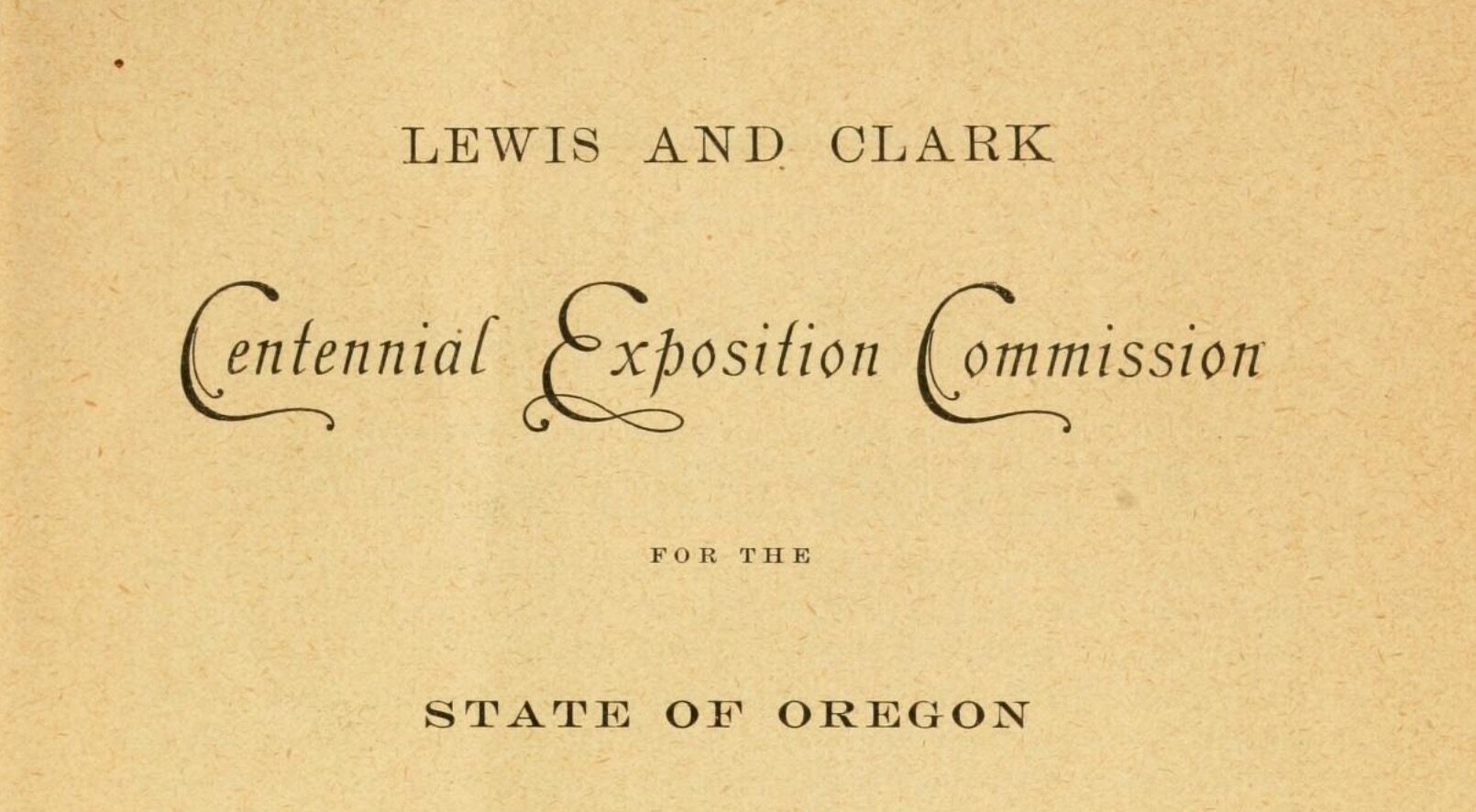
This document created in 1904 was created to summarize the benefits of Oregon and the upcoming World's Fair in Portland in 1905
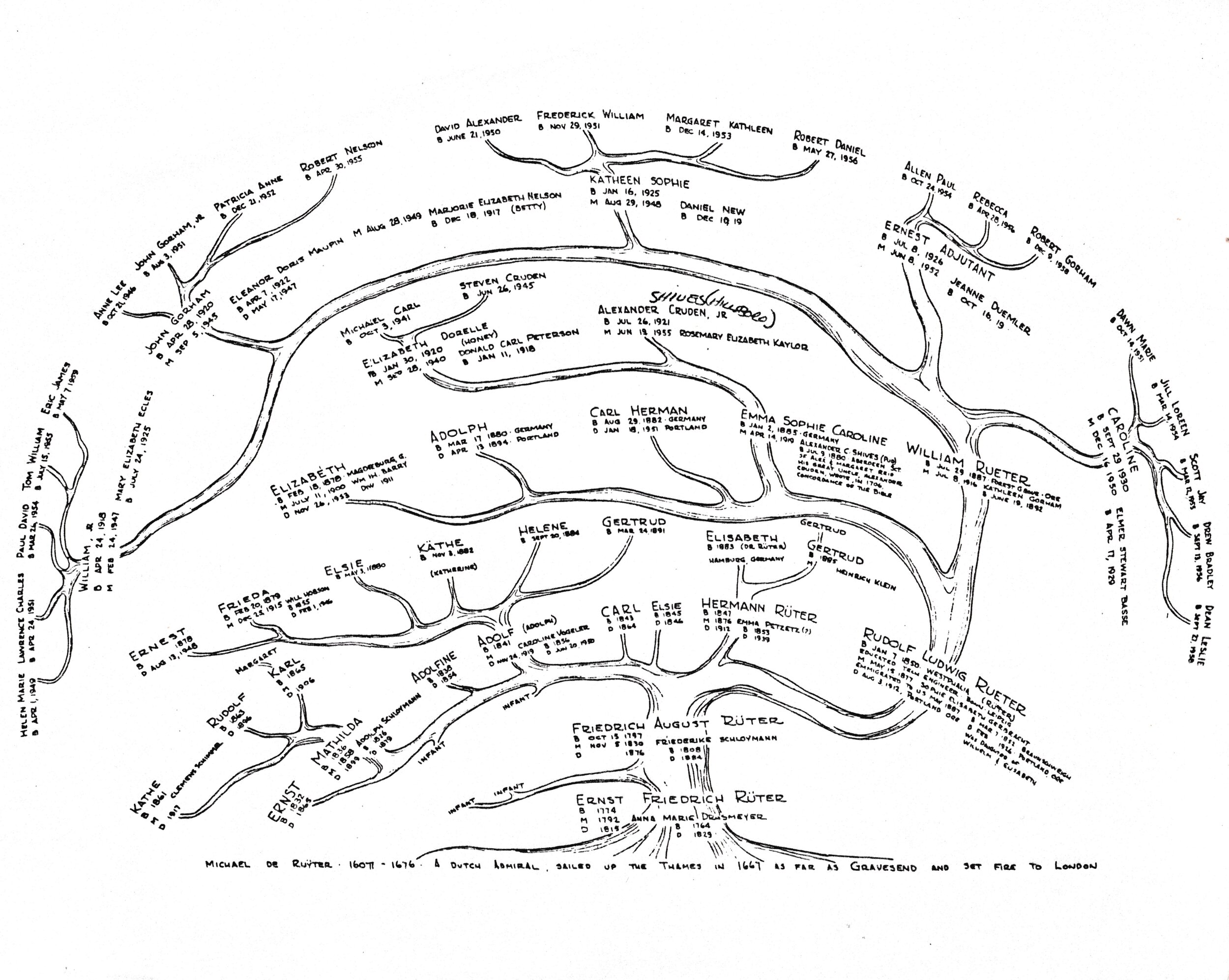
This original copy of the Rueter family tree was gifted to me by a distant relative, still living in Portland, Oregon. The Family surname has been Americanized and can be found spelled in different ways.
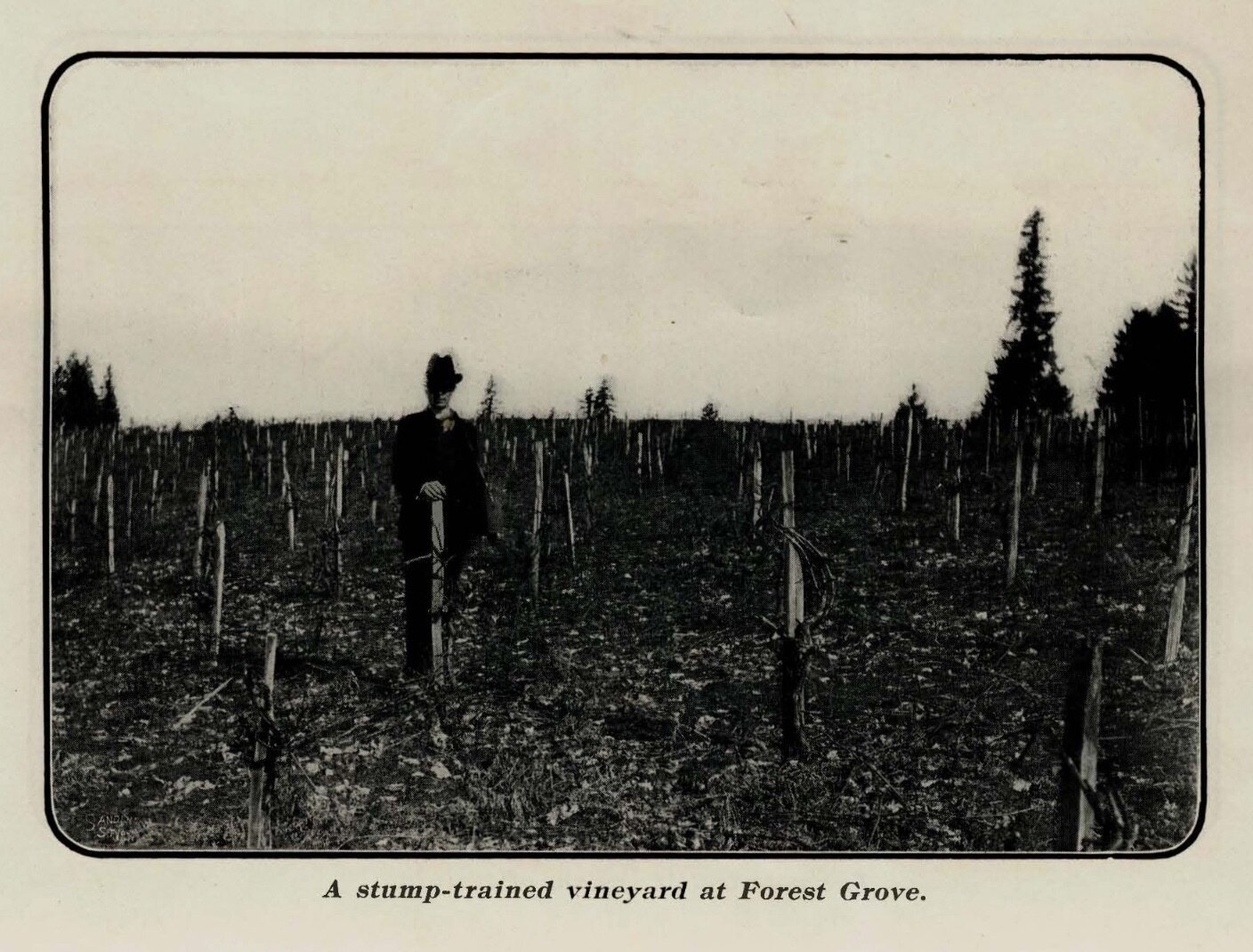
Image from an unnamed vineyard in Forest Grove. This is from the annual agricultural summary from the Oregon Agricultural College (now OSU)
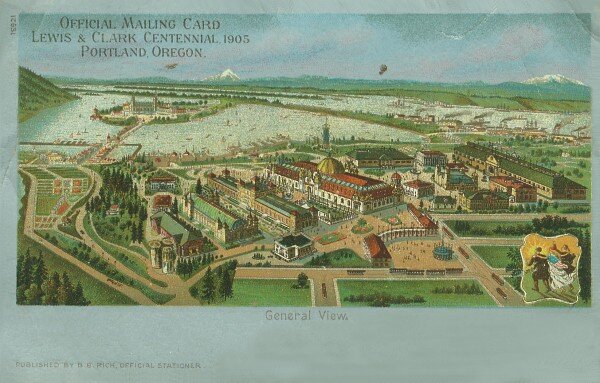
Wine from Reuter Estate were featured at the 1905 Lewis & Clark Exposition in Portland, Oregon

The Reuter Family Vineyard received a silver medal for one of their wines at the 1905 "Lewis & Clark Exposition" in Portland, Oregon. This is an original gold medal from that same exposition
Charles & Shirley Coury
(1965 - 1978)
Like many people in the wine business, Charles Coury got bit by the wine bug. He was not born into the industry, the industry seduced him and lured him in by playing to his first profession. Charles Coury received his Bachelors Degree in Meteorology from U.C.L.A. in 1952, but then was quickly wisked away to participate in the Korean War. It was at an officers hall somewhere in Korea were he first encountered European wines. He became a complete convert when he made the connection between weather, place, soil, and taste. This to him was a revelation, so upon his return to the U.S.A, he immersed himself into the world of wine. He considered going back to school, but he just started a family, so a job had to come first. Back home in Los Angeles he took a job working for a wine wholesaler. He was selling and drinking wines from around the world and became enthralled with its history, diversity of taste, and the communal nature of wine. After much encouragement from his wife Shirley, he entered the Horticulture program at U.C.-Davis in 1961 and set out to earn his 2nd degree. Coury’s meteorological degree was the basis for most of his wine beliefs along with a deep appreciation of traditional wine cultures and their wines. His year long apprenticeship in Alsace at INRA provided him with his foundational beliefs on the benefits of technology in winemaking (Alsace was using lots of temperature controlled stainless steel tanks at that time) and rigorous clonal trials of a wide variety of grapes. Once he returned home from Europe, he noticed that wine was prime to enter our expanding “middle class”. Coury’s vision was correct, but he struck while the iron was not fully formed.
Charles Coury came to Oregon because of a movie. Sometime in the late 1950’s early 1960’s the family watched the WWII movie “Battleground” staring Van Johnson. There’s a scene in the movie where the Americans came to a “T” section in the road. It was in the middle of winter, the sign post read:
→ “Bastogne Reims →
This was Coury’s “A-Ha” moment. He’s seeing a sign pointing towards Reims, the center of Champagne. To him, Champagne is one of the greatest wine regions in the world, his meteorological brain kicks in…..snow…fine wine region…snow…fine wine region…cold…fine wine region. Wait? What?
All of the talk in those UC-Davis days was only about the viability and supremacy of the Napa Valley and vicinity. Coury was drinking all of the Pinot Noir, Riesling, Gewurztraminer that were being made there at the time and felt that it was just too darn warm there to make world class wines. In his mind, they failed, compared to their European counterparts. He was always amazed that people actually believed that the grapes grown in the Mediterranean climate of the Napa Valley were superior to their counterparts from the continental climates of France and Germany. This frustrated him. So, he set out to prove them wrong by using his knowledge of weather to emphasize his theory. Coury’s Masters thesis was centered around the potential wine regions of the Pacific Northwest. The original area of focus of his thesis was denied by his professors, as it ran counter to the teachings of that time period. Many in California felt that it was just too wet and cold in Oregon to grow wine grapes. Why would they allow someone to write their Master’s thesis that completely challenged nearly all of his schooling there. Coury was the top student in his class and was awarded a scholarship to study at the
Institut National de la Recherche Agronomique in Colmar, Alsace, France. Coury was forced to re-write his thesis while he was at INRA in France or face not earning his Masters degree. This time, the title of his thesis was “Wine Grape Adaptation in the Napa Valley, California”. While he begrudgingly acquiesced, he did get at least one major challenge in this approved thesis. He challenged (and has since been proven correct) that on its own, heat summation is NOT a reliable indicator to determine which grapes to grow in certain areas.
The story of Charles & Shirley Coury is rarely told as they left the Oregon wine industry before the industry really took off, but their influence is still found all throughout Oregon and beyond. Many of the vines that were rooted in their vine nursery are found in many of Oregon’s oldest and most influential vineyards. There is more to share about them, but this summary has already gotten too long……there’s a larger project in the works now, about them. It is an epic tale and one that we could all learn from.
“This is no pioneering effort! This is a renaissance! They were doing this 75 years ago. We are just rediscovering what was forgotten.”
-Charles Coury, June 1976.



Charles Coury walking up “The First Row” with his dog Gypsy
This image was take for an insert in the Oregonian from April 1975, titled “xxxxxxxxxxxxxxxxxxxx”
David Teppola, Lee Stewart, Michael Dowsett, and others….
David Teppola met Charles Coury in the early to mid 1970’s. David was impressed and inspired by Coury’s winemaking experiences in Europe, his viticultural prowess, his ballooning nursery business and Chuck’s vision for the future of Oregon wine. David was a follower of Chuck’s and saw an opportunity to attach his cart to a powerful force. By 1975, David Teppola would become the first investor in the Charles Coury Winery (not the vineyard), his investment secured loans to purchase numerous Stainless Steel tanks from Santa Rosa Stainless Steel. By the 1976 vintage they had an entire SS tank farm outside. It was the largest winery in Oregon at the time…. This size growth was a mistake as the general consumer was not mature enough to sell such a large quantity of wines from a region that was only six vintages in. Coury’s vision of the future was tough to reign in. This ambition would force him to leave the industry and lead to many of his investors calling in their loans. This was the mid- 1970’s when multiple oil embargoes and rising inflation decimated many industries. Between 1977 - 1981, the former Coury Vineyar & Winery operations changed hands 4 times.
MORE COMING SOON………





